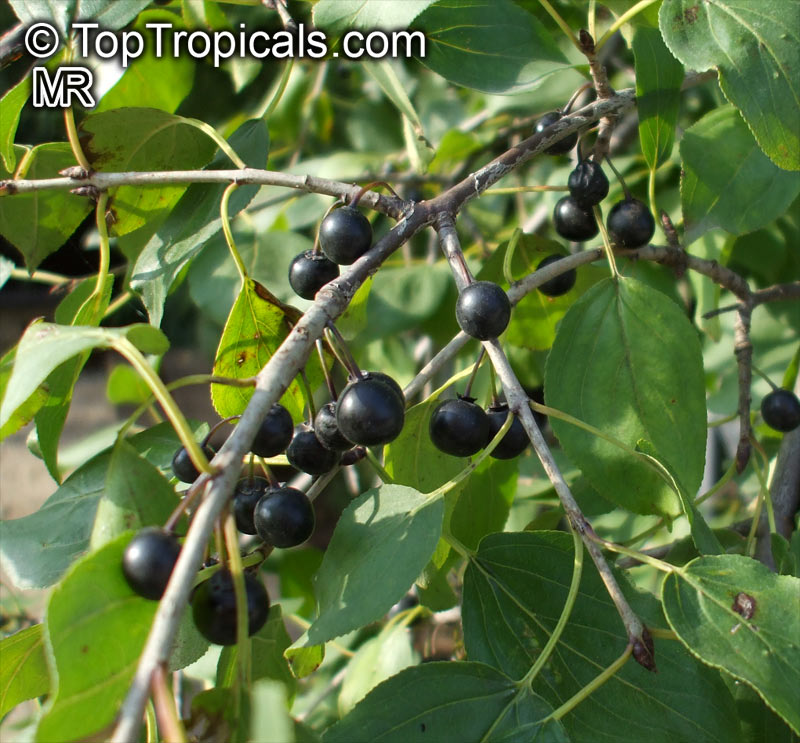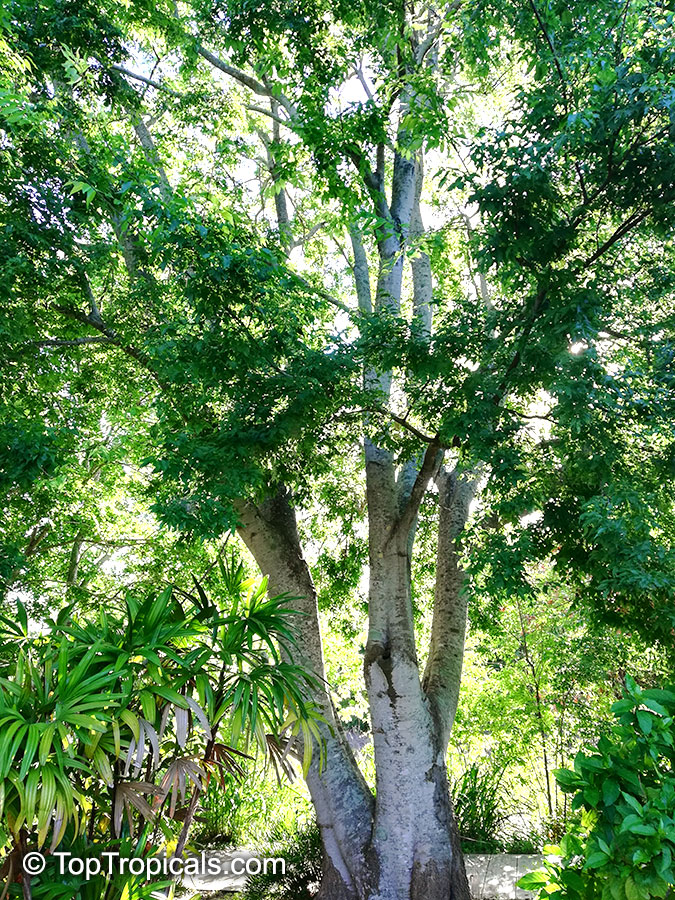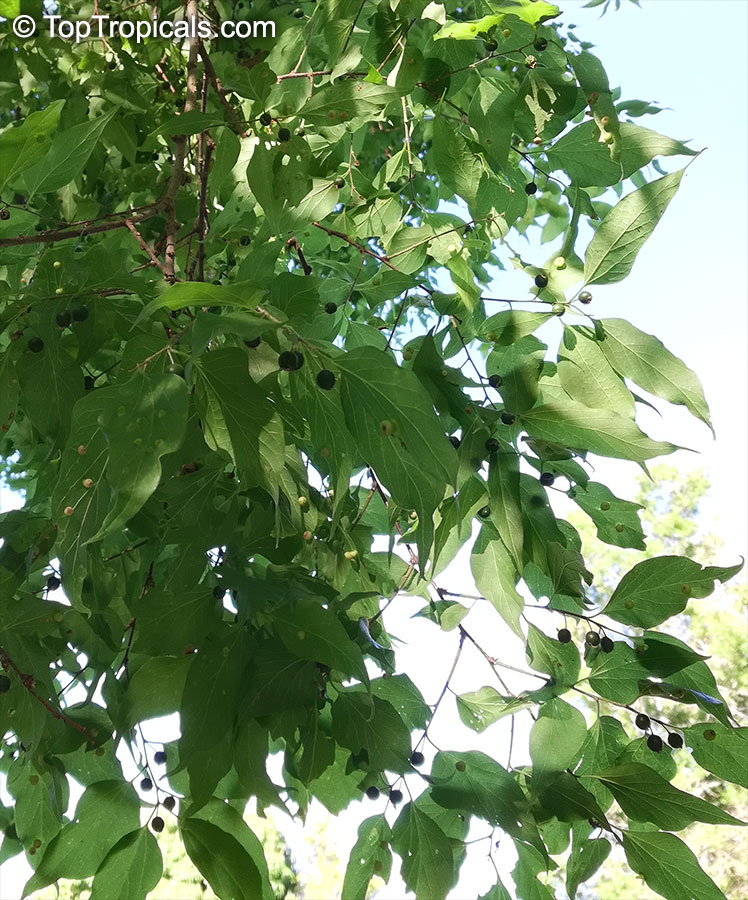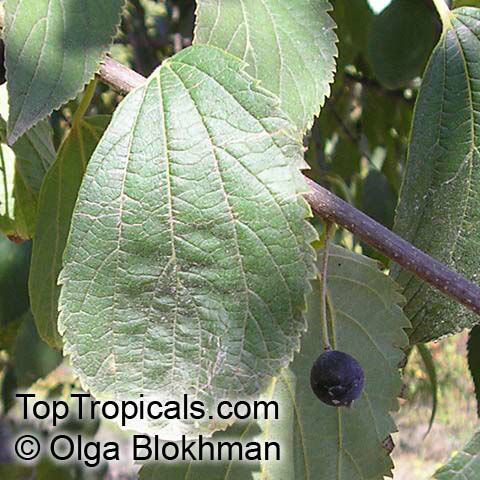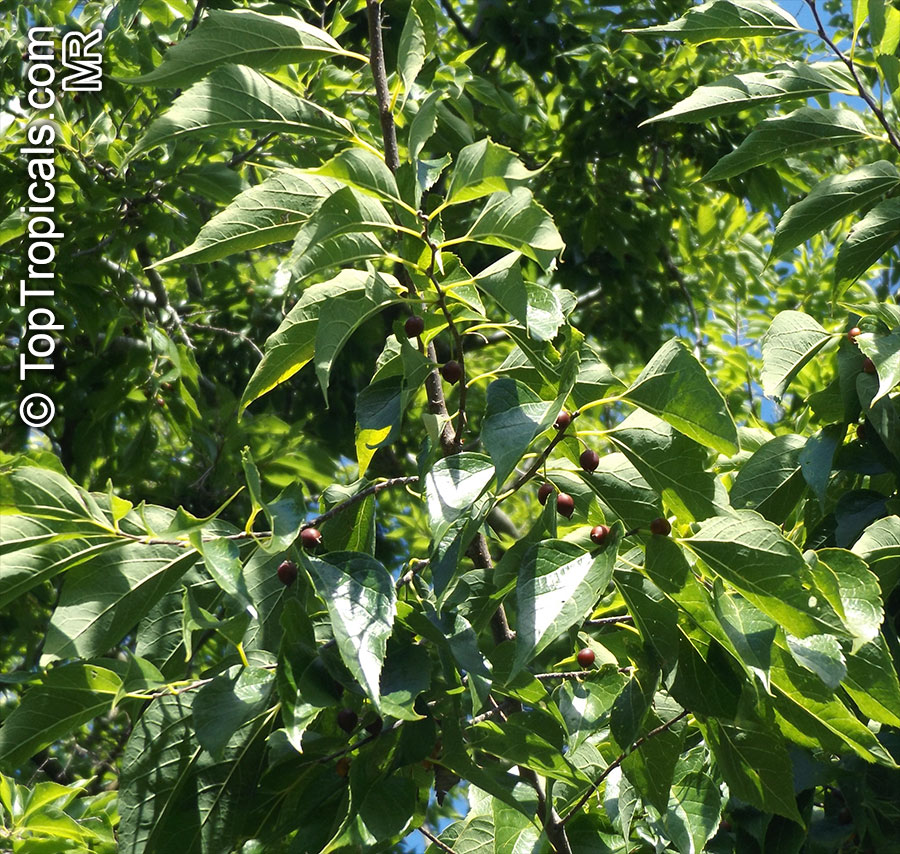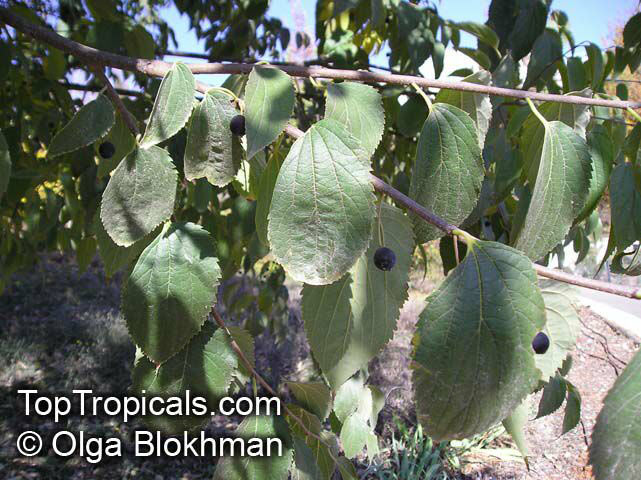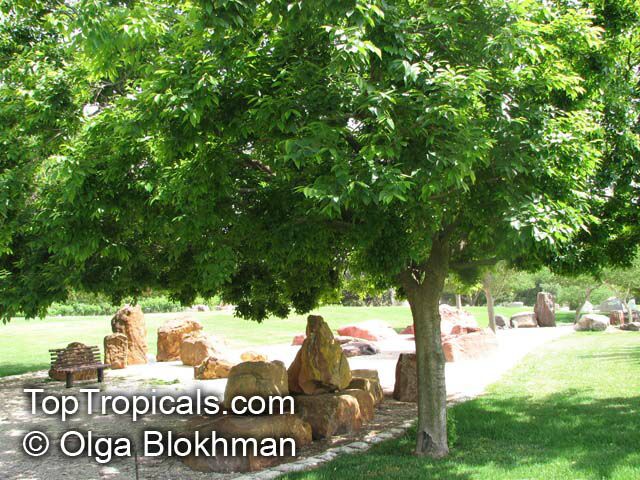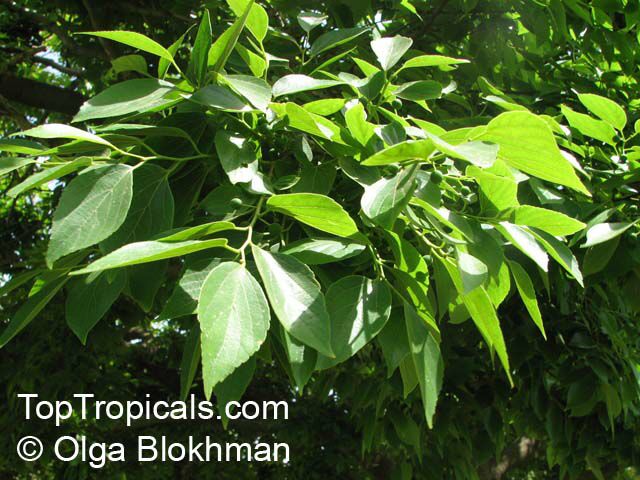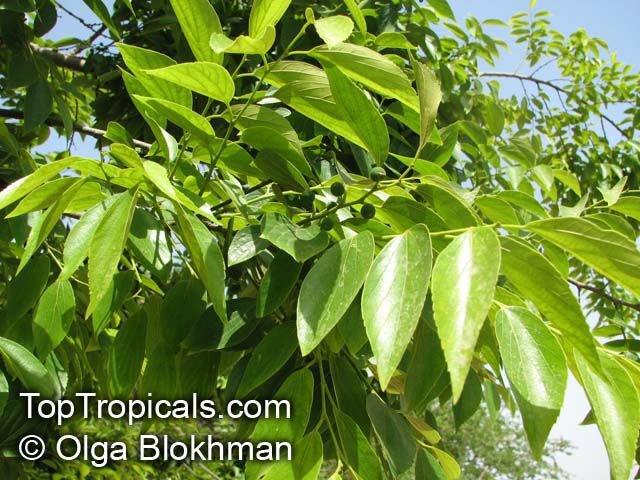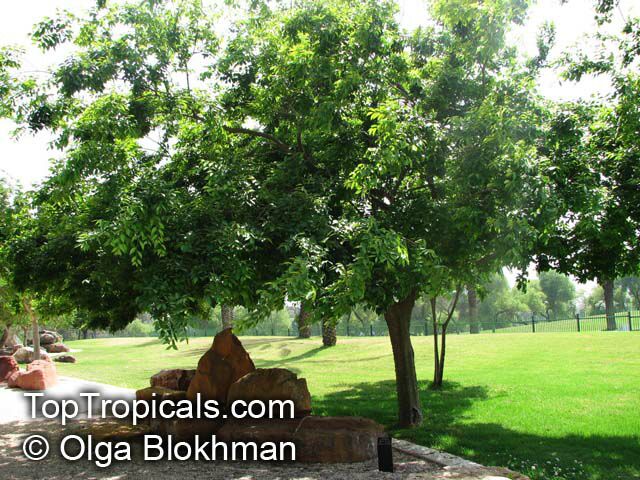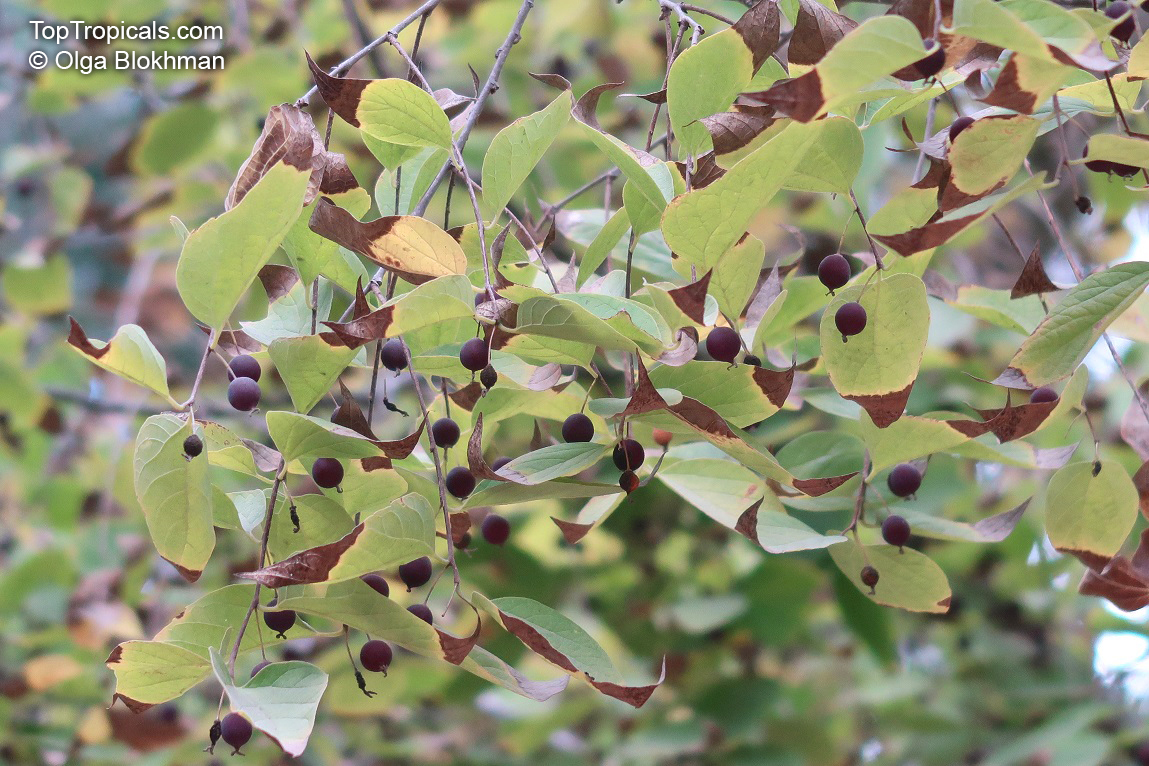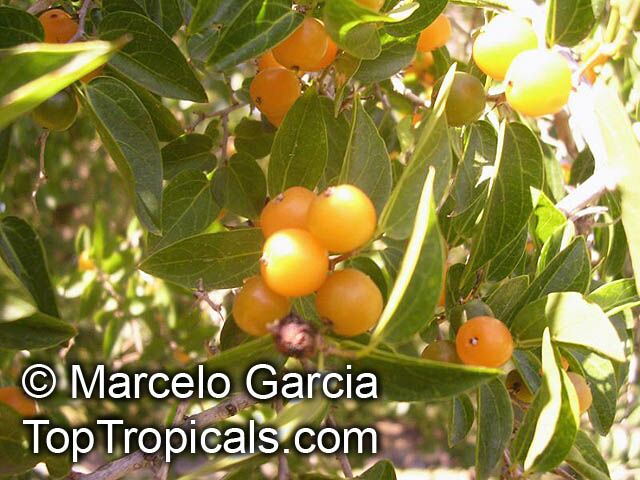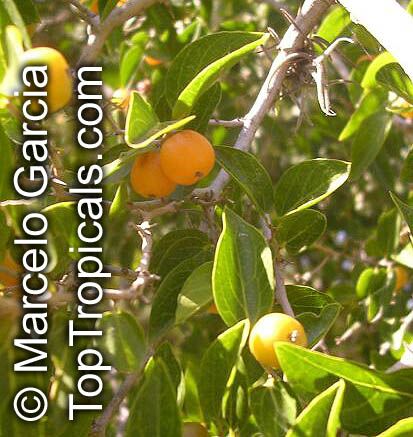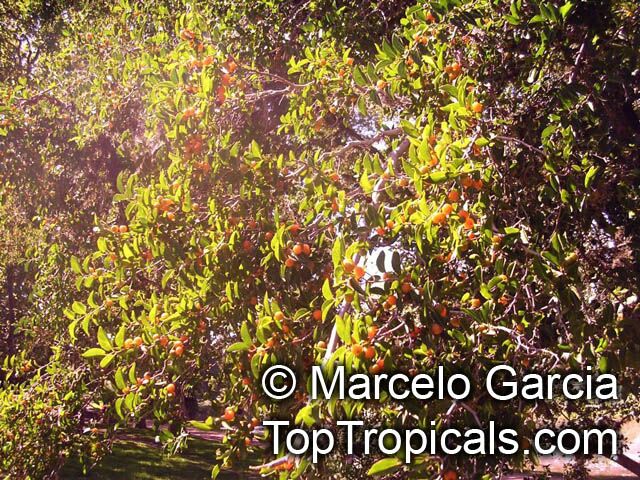Ulmaceae - Botanical Family
Top Tropicals Plant Encyclopedia
| Number of plants found: 2 |
Botanical name: Celtis sp.
Common name: Bunge's Hackberry
Family: Ulmaceae
Origin: East Asia








Celtis sp. (Bunge's Hackberry) is a small deciduous tree that originates from East Asia, making it a popular choice for landscaping. Growing 10-20 feet in height and width with a medium growth rate and an upright branching structure, this plant can provide shade and beauty throughout the year. It does best when it is planted in an area receiving full sun to partial shade and moderate water. Hardy in USDA Zones 3-8 and able to withstand lows of 30s F for a short time, it is an ideal choice for smaller yards and gardens.
This small tree also serves as a food source for locals, with its leaves being a savoury addition to rice dishes and as a tea substitute. In addition, its fruits are edible and sweet, with a dark-purple hue that is popular with birds and other wildlife. In warmer climates, this plant can produce around 20-30 fruits per year, with the bounty ripening in June or July. Not only are these fruits edible, they also contain vitamins and minerals that provide a healthy boost to the diet.
Celtis sp. (Bunge's Hackberry) is a great choice for smaller gardens, as it thrives in a variety of soils and doesn't require a lot of maintenance. When grown in a pot, it's important to ensure it has adequate drainage and is brought indoors during cold winters. This plant also attracts beautiful butterflies, hummingbirds and other wildlife, making it a great addition to any yard or garden.
Botanical names: Celtis tala, Celtis spinosa, Celtis sellowiana
Common name: Tala
Family: Ulmaceae
Origin: Central and South America







Celtis tala is a small tree that is most commonly found in Central and South America and can reach between 10-20 ft in height. The tree can be used for bonsai, if desired, and simply requires full sun or semi-shade and regular watering. Those living in colder climates can successfully grow Celtis tala in a pot if they provide it with regular water, but ensure they use a pot with good drainage.
The fruits of the Celtis tala are an edible, egg or globe shaped and of a bright yellow or orange color. Though they can be slightly astringent, these fruits have many health benefits and can be used the same way as other fruits. One mature tree can produce up to 20 pounds of these edible fruits in one season and they can be used from making jams to jellies, desserts, liquors and even used for medicinal purposes.
Due to its health benefits, the Celtis tala is highly sought after and has been used for centuries for treating everything from fever to kidney problems. Rich in vitamins and minerals, the Celtis tala fruit contains vitamin C, calcium, magnesium, sodium, potassium and phosphorus, just to name a few. All of which combined make the Celtis tala fruit a delicious, nutritious and healthful snack.
Use link to repeat this search:
https://toptropicals.com/cgi-bin/garden_catalog/cat.cgi?search_op=and&keyword_op=and&language=e&family=Ulmaceae&number=10
&no_change_lang=1&user=tt&sale=1&first=0
